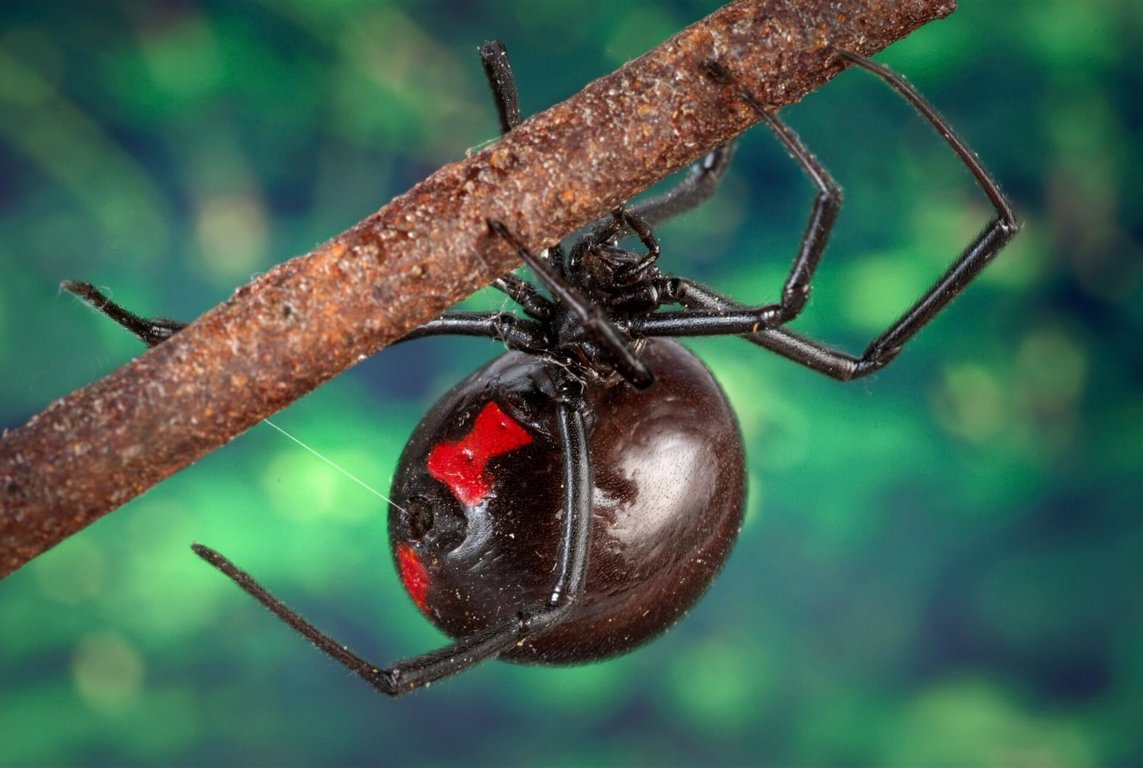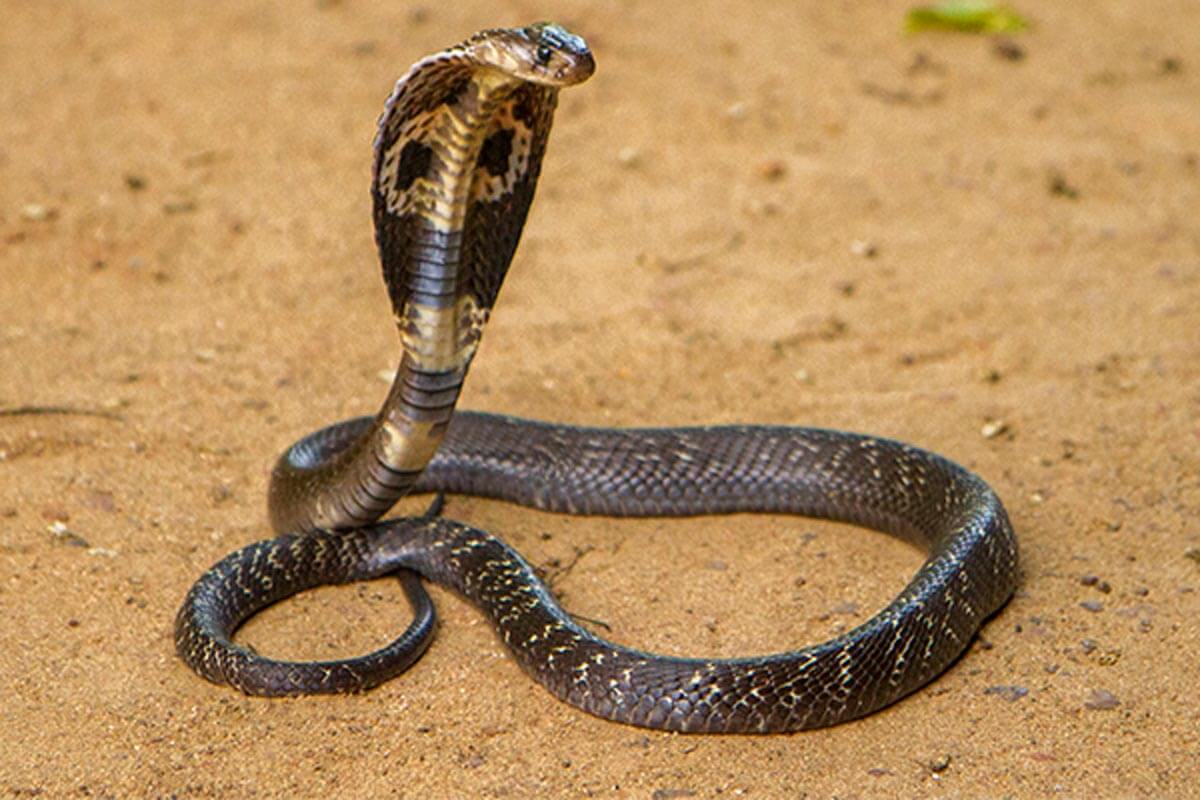If you cross paths with an unknown species of snake, you may wonder if it’s poisonous or venomous—or if there’s even a difference. The truth is “venomous” and “poisonous” are unique concepts, and describe specific ways that animals wield their chemical weaponry.
Venomous and poisonous animals both use toxins—substances that cause substantial, harmful physiological effects at small doses—to defend themselves or subdue prey.
But venomous creatures, such as wasps, deliver their toxic cocktails by wounding another animal, often via a fang, stinger, or spine. In contrast, poisonous organisms administer secretions passively, usually through their skin, when another creature touches or ingests it (think poison frogs).
Pick your poison
Poisonous species only deploy their toxins defensively, to avoid being eaten by predators, says David Nelsen, a biologist at Southern Adventist University in Tennessee. This is why venoms bypass the digestive system via wounds to the body.
Many poisonous animals don’t manufacture their own defenses, instead gleaning them from sources in their environment. Pufferfishes, for example, get their tetrodotoxin from a marine bacterium. As caterpillars, monarch butterflies eat toxic milkweed plants, which gives them a bitter taste in adulthood.

Warning colors also abound among poisonous wildlife, particularly brilliant poison frogs native to Central and South America.
“Poison frogs carry a broad assortment of neurotoxic alkaloids that range from simply distasteful to terrifyingly lethal,” says Rebecca Tarvin, an evolutionary biologist at University of California, Berkeley.
One of the most poisonous animals on the planet, Colombia’s golden poison frog (Phyllobates terribilis) concentrates batrachotoxin—probably from tiny beetles in its diet—and secretes it from glands on its skin. One animal produces enough poison to kill several people.
Similar toxin-yielding beetles are thought to supply the poisonous feathers of the hooded pitohui bird (Pitohui dichrous), which is native to Papua New Guinea.

Golden poison dart frogs get their toxins from eating tiny beetles.
Bites and jabs
Because venoms are generally made by the animals that use them, they’re more physically complex, and “must be delivered more directly into the body of another organism, bypassing the digestive system,” says Nelsen.
And a popular method for many venomous creatures is a toxic bite. Spiders and snakes, for example, dispense their toxins through hollow fangs that shut down their prey’s neurological and circulatory systems.
Nature has evolved other ingenious strategies. Some lizards—including the gigantic Komodo dragon—appear to have their own venomous saliva. The solenodon—a rare, shrew-like mammal from the Caribbean—also has a venomous bite. The marine cone snail uses a modified tooth as a venomous harpoon to ensnare small prey, but it can inject enough toxin to kill animals much larger.
Other venomous animals inject their toxins using a stinger or a spine, like the stonefish, which harbors excruciating venom in its dorsal fin spine, or Greening’s frog, which uses small spines on its head to attack with a toxic “headbutt.”
Stranger still is the venom system of the slow loris (genus Nycticebus), a nocturnal primate from Southeast Asia. The lorises have glands underneath their upper arms that produce toxins, which are then licked up by the loris and dispensed as a bite when threatened.

After biting a victim, Komodo dragons can follow it for miles as the venom takes effect, using their keen sense of smell to hone in on the corpse.
Anna Nekaris, a primate biologist at Oxford Brookes University, says that the saliva and toxin mixture appear to cause dramatic immune reactions in the bitten animal. “In humans, this manifests itself as anaphylactic shock, extreme pain, or [tissue death],” she says.
A third category?
Bridging the poisonous and venomous categories may be a third toxin delivery type: the toxungen. Toxungenous animals don’t inject their toxins using fangs or stingers, but they don’t wait to be touched or mouthed either: They fling or spray their toxins at their attackers. Bombardier beetles spew irritating benzoquinones from their abdomens, and fire salamanders spray toxins from their glands over a foot away.
Then there’s the skunk.
“Most people have never considered skunk spray as toxic,” says Nelsen. “But a dog or cat that gets sprayed in the face can suffer violent fits of sneezing, vomiting, temporary blindness, and even damage to their red blood cells.”
All of the above
In rare cases, species can be venomous and poisonous at the same time.
Take spitting cobras, which bite and spray painful, blinding venom at the eyes and face of an assailant, thanks to pores in their fangs. This makes them toxungenous as well.
Some keelback snakes of Southeast Asia have a venomous bite as well as feed on poisonous toads, stealing the amphibians' toxins and excreting them in their neck glands.
So, sometimes, the answer to the question of, Is this snake poisonous or venomous? may actually be: both.




